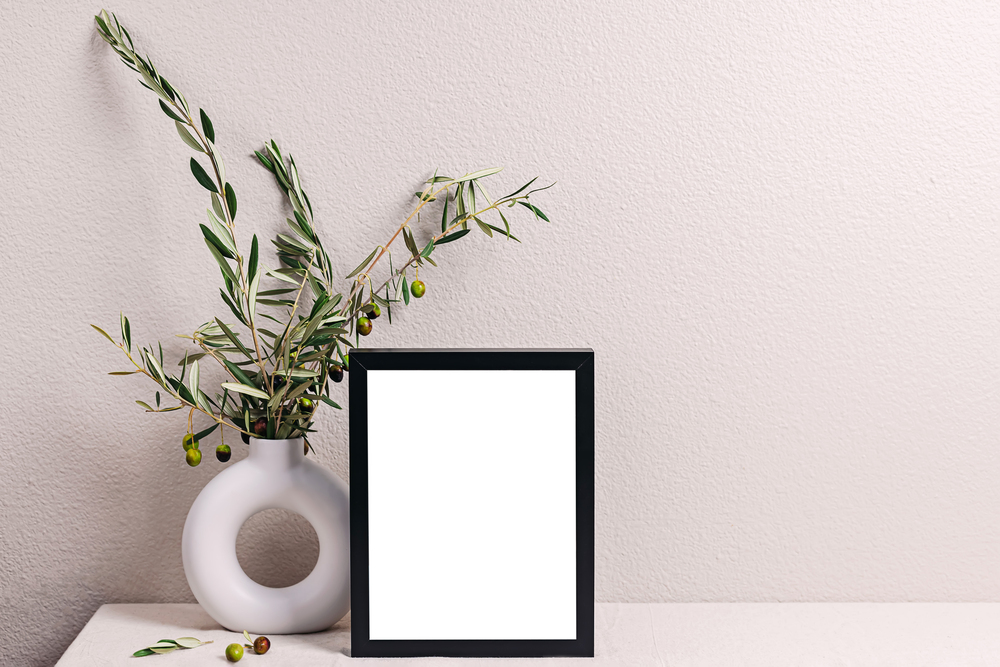
Introduction
Selecting the right frame for your wall decor can completely transform a room. It’s not just about the physical frame but the entire mood it sets. When it comes to a 16×20 frame on a wall, it strikes a balance between being noticeable yet not overpowering. This size is perfect for highlighting memorable photos, cherished artworks, or statement posters. In this article, we’ll explore why this particular frame size is so popular, delve into the latest trends, and share some handy tips to make sure your wall decor shines.
Why Choose a 16×20 Frame on Wall?

When you choose a 16×20 frame, you’re opting for a very versatile option. Here’s why it might be the perfect choice for your space:

- Just the Right Size: A 16×20 frame is large enough to show off details in photos, paintings, or artwork, but not so large that it dominates a wall. It can serve as a focal point without overwhelming the surrounding decor.
- Versatility in Placement: This frame size seamlessly fits various locations such as living rooms, bedrooms, hallways, or even office spaces. It’s adaptable whether hung alone or as part of a gallery wall.
- Works with Different Styles: From modern and minimalistic to vintage and eclectic, a 16×20 frame works across different interior aesthetics. You can match it with the style of the room or use it as a contrasting piece to create visual interest.
- Design Studies Support: The 16×20 size is a popular choice for those who want to bring balance and elegance to their wall decor without complicating the overall design.
For more information on types of frames available, take a look at what The Spruce has to mention.
Popular Trends for 16×20 Frames

The 16×20 frame has become a staple in modern wall decor, thanks to its versatile size and ability to adapt to various styles. If you’re curious about what’s trending with these frames, here are some popular trends to consider:
- Minimalistic Frames: Sleek lines and simple designs are in vogue, complementing contemporary decor with understated elegance.
- Vintage Frames: Frames with a retro or distressed look can add charm and character to your space, appealing to those who love a touch of nostalgia in their home.
For an in-depth look at evolving home decor styles, you might want to explore the latest home decor trends. Keeping up with trends ensures your decor remains fresh and visually appealing.
Frames for 16×20 Prints and Posters
When it comes to choosing the right frame for your 16×20 print or poster, the material and design can make a big difference. Here’s a breakdown of frame types you might consider:
- Wooden Frames: Classic and versatile, these frames can suit both traditional and modern settings, available in a variety of finishes to match your decor.
- Metal Frames: These offer a sleek, contemporary look. They are particularly popular in minimalist designs where simplicity is key.
- Acrylic Frames: Lightweight and modern, acrylic frames create a bold statement and can be a good fit for colorful or abstract prints.
Whether you’re hanging a vibrant 16×20 poster or a cherished family photo, selecting the right frame material can enhance your artwork’s aesthetic while complementing your room’s design.
How to Hang a 16×20 Frame Correctly

Hanging a 16×20 frame on your wall might seem straightforward, but doing it right ensures your artwork is secure and level. Here’s a step-by-step guide to help you hang your frame correctly and enhance your home’s aesthetic appeal.
Materials You’ll Need
- Measuring tape
- Pencil
- Level
- Hammer or screwdriver (depending on the type of wall hook)
- Wall hooks or picture hangers suitable for the weight of your frame
Step-by-Step Instructions
- Choose the Right Spot:
- Identify the ideal location for your frame. Consider light exposure, wall space, and how it complements other decor elements.
- Prepare Your Tools:
- Gather all tools and materials before starting to streamline the process.
- Measure and Mark:
- Use the measuring tape to determine where the top of the frame will be.
- Mark the spot lightly with a pencil; this will be your guide.
- Secure the Hook:
- Use anchors or wall hooks, depending on whether your wall is drywall or brick.
- Follow the specific instructions for the hardware you are using; standard nails might not be sufficient for heavier frames.
- Align the Frame:
- Hold the frame against the wall where you marked it.
- Use a level to ensure the frame is straight; adjust as necessary.
- Hang the Frame:
- Carefully hang the frame onto the hook or nail.
- Double-check that it’s level and sits securely.
- Final Adjustments:
- Stand back and inspect the placement, ensuring it aligns well with other decor items.
Following these steps will help you hang a 16×20 frame securely, ensuring that it remains a beautiful focal point in your room.
16×20 Picture Frames for Unique Spaces
A 16×20 frame can be an excellent choice for various rooms in your home. The key is knowing how to place them to create an impact. Here’s how you can use 16×20 frames effectively in different spaces:
Living Rooms
- Place a 16×20 frame above the sofa to serve as a central piece.
- Consider creating a small gallery wall with several 16×20 frames to add depth and character.
Bedrooms
- Use 16×20 frames above a headboard for a balanced look.
- Pair with smaller frames on nightstands for a cohesive design.
Offices
- Hang a 16×20 frame on a blank wall to add personality to your workspace.
- Consider motivational prints or calming abstract art to influence the room’s mood.
Creative Arrangements
- Use 16×20 frames as focal points, making them the centerpiece of a wall by surrounding them with smaller pieces or decorative elements.
Exploring placement options for different rooms allows you to effectively use your 16×20 frame, enhancing the overall aesthetics of your living space. Making informed decisions about where and how to hang these frames can transform your home into an inviting and stylish environment.
For additional details on creating visual impact, you might find this resourceful guide insightful.
Best 16×20 Frames for Different Art Styles
Selecting the right frame for your artwork can make a significant impact on its overall presentation and visual appeal. Here are some tips for choosing the best 16×20 frames based on different art styles:
- Modern Art: If you have a piece of modern art, consider frames with clean lines and minimalistic design. Metal frames work well here, often in silver or black, to create a sleek look. They allow the artwork to stand as the focal point without distraction.
- Classic Art: Traditional art pieces often benefit from ornate frames. Opt for wooden frames with intricate carvings or gold leaf finishes. These types of frames can enhance the timeless feel of classic artwork.
- Abstract Art: With abstract art, the frame should support the unique aspects of the piece. Consider floating frames that create a sense of depth, or colorful frames that complement the palette of the artwork.
Care and Maintenance of 16×20 Frames
Proper care and maintenance of your frames ensure they remain in excellent condition and protect your artwork:
- Cleaning: Use a soft, dry cloth to dust the frame regularly. For glass surfaces, a gentle glass cleaner can be used, but ensure the cleaner does not drip onto the frame itself as it might damage certain materials.
- Preventing Fade: Keep frames away from direct sunlight to prevent colors from fading. Choosing UV-protective glass can also help block harmful rays.
- Avoiding Moisture: Place frames in low-humidity environments to prevent wood frames from warping or metal frames from rusting.
- Secure Hanging: Check the hanging hardware periodically to ensure it remains secure. Using wall anchors can provide additional stability, especially for heavier frames.
Regular attention to these details will help in maintaining both the frame’s quality and the integrity of the art piece within.
- 2shares
- Facebook0
- Pinterest2
- Twitter0
- Reddit0



